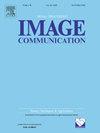An adaptive contextual learning network for image inpainting
IF 2.7
3区 工程技术
Q2 ENGINEERING, ELECTRICAL & ELECTRONIC
引用次数: 0
Abstract
Deep-learning-based methods for image inpainting have been intensively researched because of deep neural networks’ powerful approximation capabilities. In particular, the context-reasoning-based methods have shown significant success. Nonetheless, images generated using these methods tend to suffer from visually inappropriate content. This is due to the fact that their context reasoning processes are weakly adaptive, limiting the flexibility of generation. To this end, this paper presents an adaptive contextual learning network (ACLNet) for image inpainting. The main contribution of the proposed method is to significantly improve the adaptive capability of the context reasoning. The method can adaptively weigh the importance of known contexts for filling missing regions, ensuring that the filled content is finely filtered rather than raw, which improves the reliability of the generated content. Specifically, a modular hybrid dilated residual unit and an adaptive region affinity learning attention are created, which can adaptively choose and aggregate contexts based on the sample itself through gating mechanism and similarity filtering respectively. The extensive comparisons reveal that ACLNet exceeds the state-of-the-art, improving peak signal-to-noise ratio (PSNR) by 0.25 dB and structural similarity index measure (SSIM) by 0.017 on average and that it can generate more aesthetically realistic images than other approaches. The implemented ablation experiments also confirm the effectiveness of ACLNet.
一种用于图像绘制的自适应上下文学习网络
由于深度神经网络强大的逼近能力,基于深度学习的图像绘制方法得到了广泛的研究。特别是基于上下文推理的方法取得了显著的成功。尽管如此,使用这些方法生成的图像往往会出现视觉上不合适的内容。这是由于它们的上下文推理过程适应性较弱,限制了生成的灵活性。为此,本文提出了一种用于图像绘制的自适应上下文学习网络(ACLNet)。该方法的主要贡献是显著提高了上下文推理的自适应能力。该方法可以自适应地权衡已知上下文的重要性来填充缺失区域,确保填充的内容经过精细过滤而不是原始过滤,提高了生成内容的可靠性。具体而言,创建了模块化混合扩展残差单元和自适应区域亲和学习注意,分别通过门通机制和相似度滤波,基于样本本身自适应地选择和聚合上下文。广泛的比较表明,ACLNet超越了最先进的技术,将峰值信噪比(PSNR)提高了0.25 dB,结构相似性指数(SSIM)平均提高了0.017 dB,并且可以生成比其他方法更美观的真实图像。实现的烧蚀实验也证实了ACLNet的有效性。
本文章由计算机程序翻译,如有差异,请以英文原文为准。
求助全文
约1分钟内获得全文
求助全文
来源期刊

Signal Processing-Image Communication
工程技术-工程:电子与电气
CiteScore
8.40
自引率
2.90%
发文量
138
审稿时长
5.2 months
期刊介绍:
Signal Processing: Image Communication is an international journal for the development of the theory and practice of image communication. Its primary objectives are the following:
To present a forum for the advancement of theory and practice of image communication.
To stimulate cross-fertilization between areas similar in nature which have traditionally been separated, for example, various aspects of visual communications and information systems.
To contribute to a rapid information exchange between the industrial and academic environments.
The editorial policy and the technical content of the journal are the responsibility of the Editor-in-Chief, the Area Editors and the Advisory Editors. The Journal is self-supporting from subscription income and contains a minimum amount of advertisements. Advertisements are subject to the prior approval of the Editor-in-Chief. The journal welcomes contributions from every country in the world.
Signal Processing: Image Communication publishes articles relating to aspects of the design, implementation and use of image communication systems. The journal features original research work, tutorial and review articles, and accounts of practical developments.
Subjects of interest include image/video coding, 3D video representations and compression, 3D graphics and animation compression, HDTV and 3DTV systems, video adaptation, video over IP, peer-to-peer video networking, interactive visual communication, multi-user video conferencing, wireless video broadcasting and communication, visual surveillance, 2D and 3D image/video quality measures, pre/post processing, video restoration and super-resolution, multi-camera video analysis, motion analysis, content-based image/video indexing and retrieval, face and gesture processing, video synthesis, 2D and 3D image/video acquisition and display technologies, architectures for image/video processing and communication.
 求助内容:
求助内容: 应助结果提醒方式:
应助结果提醒方式:


